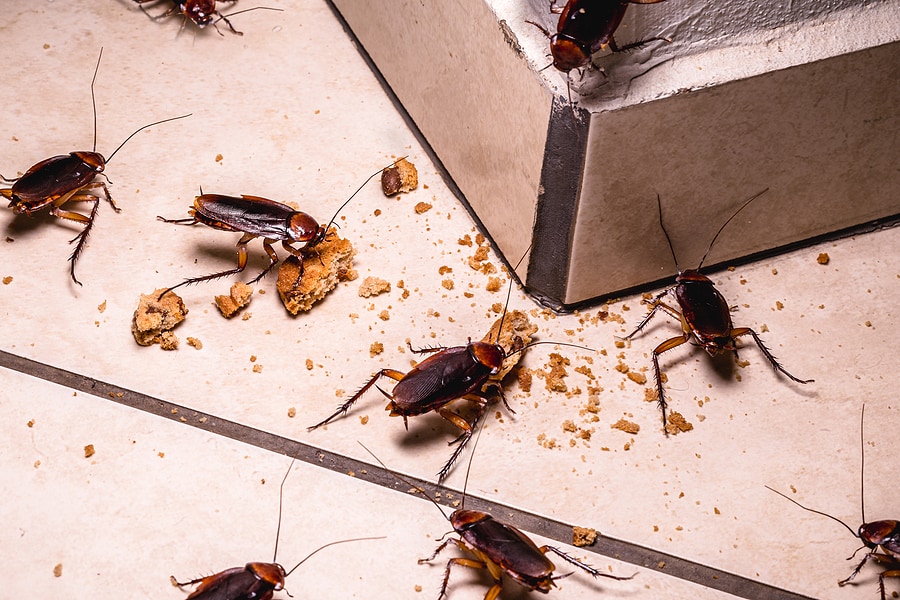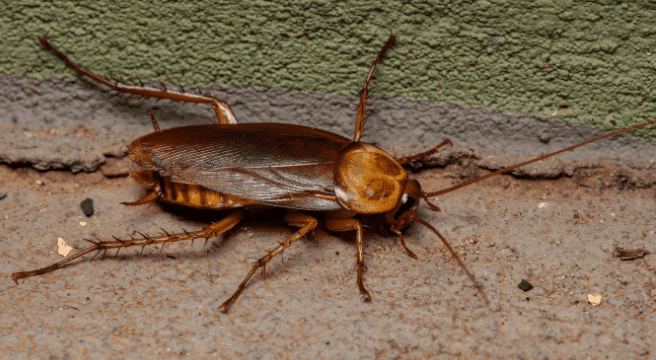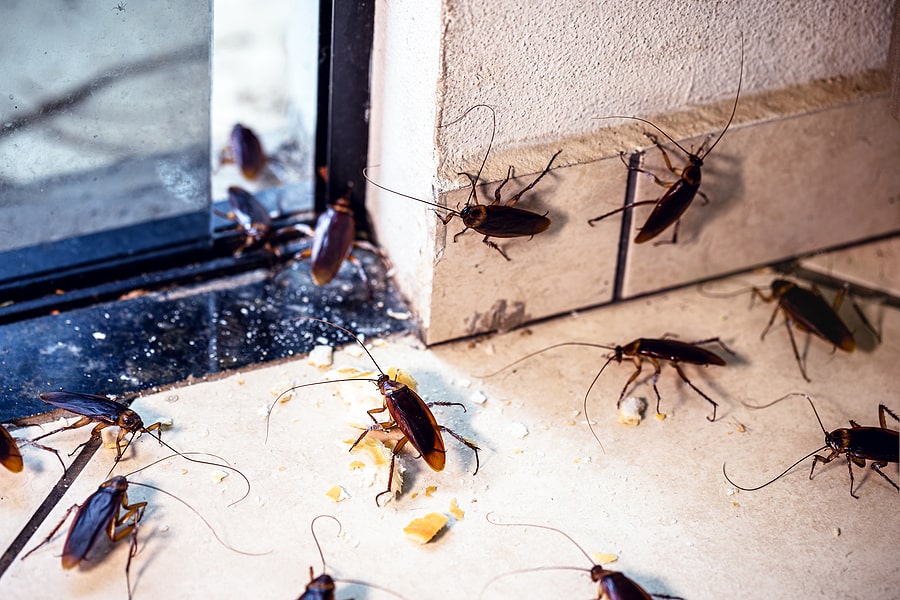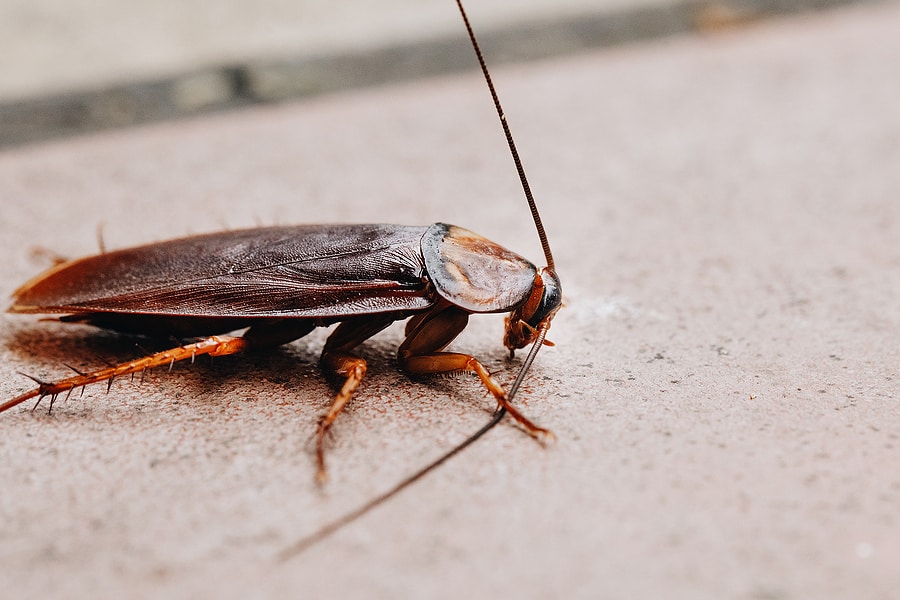READY TO GET STARTED?
REQUEST A FREE ESTIMATE
Fill out the form below or call (888) 466-7849 for a free, no-obligation estimate.

Cockroaches are sneaky pests, infesting our kitchens, bathrooms, crawl spaces, and more! These household pests are highly adaptable and can live in a variety of conditions, but their populations swell and thrive in the summertime. In Pompano Beach, our temperatures are warm practically year-round, making it highly likely to see roaches roaming around looking for a food source. Check out our top do-it-yourself roach prevention tips to keep them from taking over your home.
The main reason roaches enter homes is to search for water and food. By eliminating these sources for them, you lessen the chance that you will come across these pests in your kitchen! After each meal, clean up your kitchen as much as possible. Don’t leave your dirty dishes in the sink overnight; instead, wash and put them away after each meal. If there are crumbs leftover, clean them from all surfaces and floors. Don’t forget to wipe grease from your stovetop and other appliances after cooking too. Take out your garbage before going to bed, placing it in cans with tight-fitting lids.
Roaches are small, fitting into the smallest hole or gap to access your home. If you can see daylight around a door or window, roaches can use it to enter. Make it a habit to check around your windows, doors, foundation, roof, attic, and even crawlspace vents for holes or gaps. Seal any openings you find with caulk or utilize steel wool or foam for larger holes.
Roaches need water to survive, seeking it out in our basements and bathrooms. Any leak or plumbing issue allows these pests to infest. Check the inside of your home for leaky faucets, sinks, refrigerators, or other appliances and repair them immediately. Crawlspaces are known to produce excessive moisture, attracting roaches, termites, and rodents. Consider enclosing your crawlspace to help reduce moisture and keep these pests away.
If you’ve exhausted your DIY roach prevention measures and are still seeing these pests, contact your local Pompano Beach pest control company for help. These professionals will provide you with a thorough inspection, identify points of entry, and provide the most up-to-date treatment and prevention options.

Cockroaches are common household pests that are found worldwide. While they don’t bite or cause structural damage to homes, they can be harmful to your health by contaminating food and other surfaces and triggering allergies and asthma in those affected. Roaches can get into the cleanest of homes in their quest for food, water, and shelter which they need to survive. Once inside, roaches will seek out warmth, moisture, and darkness, often being found in kitchens and bathrooms.
How do they get inside? Roaches have become very resourceful when it comes to getting into places. They can crawl through small holes or cracks in the exterior of buildings, flattening themselves into the smallest spaces. They will also squeeze through openings around doors and windows or sneak through when they’ve been left open too long. They will hitch a ride (or even lay their eggs) on bags, luggage, backpacks, used furniture, used appliances, packages, and even groceries that you bring unknowingly into your home. They can also come in through pipes or other holes in walls (especially shared walls like those in apartments).
If you have the makings of a cockroach infestation, try some of these cockroach prevention tips to help get them under control.
Identify and Prevent Brown Recluse in Your Tennessee Home
6 Signs of Subterranean Termites

There’s one pest that every homeowner would rather not see inside their home – cockroaches. There are many distinct species of cockroaches, and each has their own unique characteristics. There are two popular types of cockroaches in the southeastern part of the US, but the American Cockroach is the largest and one of the most common out of the two. Here is a breakdown of the American cockroach and how to decide your plan of action to remove them from your home.
What is an American Cockroach?
The American cockroach is a major pest in the United States and is the largest of the home-infesting roaches. They are commonly known as the water bug, the Bombay canary, or the palmetto bug. This specific species is not native to United States, despite its name. They are typically reddish-brown with a yellowish figure eight pattern on the back of their head. They are oval shaped and range from 1 1/4″ to 2 1/8” in length.
Where are They Found?
American cockroaches are typically found outside, but it is not uncommon to find them indoors. During the summer months they can be found outside in areas like flowerbeds and underneath mulch piles. They will typically move indoors when they experience a notable change in the weather or food shortage. They prefer warm, moist, and dark environments such as basements or crawlspaces. These pests can enter structures through the sewer system, via human belongings, or by mass migration from other structures.
Are They a Threat?
The presence of American cockroaches in a home can pose a serious threat to your health. Cockroaches have been known to spread at least 33 kinds of bacteria, including E. Coli and Salmonella, along with different types of parasitic worms and other kinds of human pathogens. They have also been known to elicit year-round allergic reactions and asthma attacks due to their saliva, urine, and fecal droppings.
How Can I Prevent Them?
There are many ways to prevent roaches from entering your home. Here are some of our favorite ways to keep them out.
Finding these pests in your home can be quite alarming. Implementing cockroach prevention measures such as fixing leaks, sealing off entry points, and keeping kitchen and bathrooms clean will help keep these pests out. If this happens despite your best efforts at prevention, consider contacting a professional local pest control company that can help identify your pest, locate points of entry, and provide a prevention plan for your property to help keep roaches out.

Roaches are resilient pests that have survived millions of years on Earth. Cockroaches are naturally tropical pests, preferring warm, humid habitats to thrive in. In fact, most species of roaches will die off at temperatures below 15 degrees Fahrenheit. Roaches have learned to adapt and are expert overwintering pests, making their way indoors to avoid exposure to cold temperatures and survive the winter.
There are four species of cockroaches in the United States that can survive year-round with the appropriate overwintering environment.
To answer the question above, roaches don’t necessarily die off in the winter. As long as they can find a warm place to shelter with a food source they can survive and reproduce year-round. The next question to ask yourself is, “How are they getting into my home?” Roaches can squeeze through openings as small as 3/16″ and will use any opening they find in your walls, siding, baseboards, and ceilings to get inside. Roaches are also notorious hitchhikers and will catch a ride indoors on bags, boxes, firewood, furniture, and appliances.
Keep roaches out this winter by:
If you have a problem with cockroaches or any other household pest, contact your local pest control company for an evaluation and treatment plan.
Mouse vs Rat: 5 Differences Explained

The cockroach might just seem like a creepy, annoying nuisance, but it can cause more damage than expected. Cockroaches transmit over 30 different kinds of bacteria – E. Coli, Salmonella, and more. In addition to this, they can also trigger asthma and allergy attacks as their droppings, saliva and shed skin contain allergens that increase asthma symptoms, especially in children.
As one of the most common household pests, it’s important to keep roaches under control to lessen the effects they cause. Here we breakdown the types of cockroaches you could be seeing in your home and how you can prevent them in the future.
While prevention can help keep cockroaches away, sometimes it’s best to get a professional involved. A local pest control company will be able to inspect your home and provide you with the best treatment and prevention plan going forward.